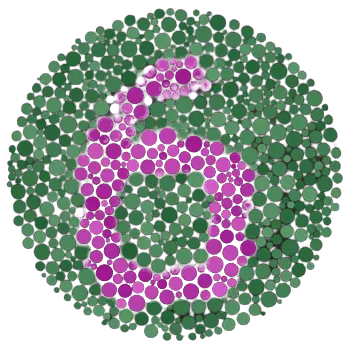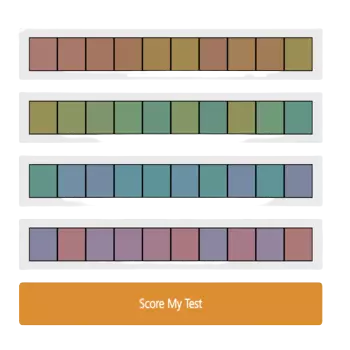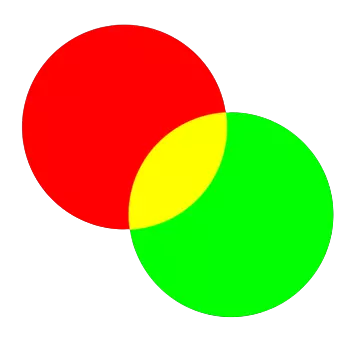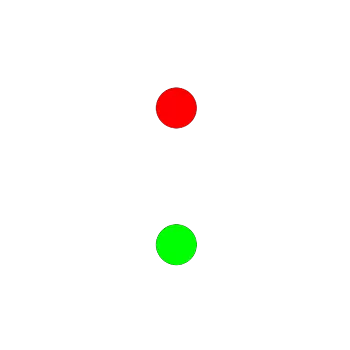Anomaloscope Test
RGB Anomaloscope is a simple test used to diagnose color blindness and to check your color vision. In this test, two different light sources have to be matched to the same color.
WHAT IS THE ANOMALOSCOPE TEST?
The Anomaloscope Test involves a special instrument called an anomaloscope. This device displays two adjacent fields:
- One field shows a fixed color (typically yellow).
- The other field displays a mixture of red and green light, which the test subject can adjust.
- Whether the person has a color vision deficiency.
- The type (such as protanomaly or deuteranomaly).
- The severity of the condition.
HOW DOES THE ANOMALOSCOPE TEST WORK?
During the test:
- 1. The person views two color fields side by side in the boxes.
- 2. In the test you have to adjust the brightness or the red-green ratio of one field to match the other field as closely as possible.
- 3. The settings and adjustments made by the individual are recorded and analyzed.
- Protanomaly (reduced sensitivity to red light)
- Deuteranomaly (reduced sensitivity to green light)
WHY IS THE ANOMALOSCOPE TEST IMPORTANT?
The Anomaloscope Test provides a level of detail that no other color vision test offers. It is important because:
- It gives a precise diagnosis of color vision problems.
- It determines the severity of the deficiency.
- It can differentiate between similar types of color blindness that other tests might not distinguish.
- Aviation professionals
- Military personnel
- It is also important in electrical wiring, quality control, and medical diagnostics
WHO SHOULD TAKE THE ANOMALOSCOPE TEST?
The Anomaloscope Test is recommended for:
- Person who fail standard color vision screenings and require a deeper diagnosis.
- Professionals applying for jobs that require perfect color vision.
- Researchers studying detailed aspects of human vision.
RELATED TESTS
DISCLAIMER
The information provided by this Anomaloscope Test is for informational purposes only and is not intended to serve as a substitute for professional medical advice, diagnosis, or treatment. If you have concerns about your color vision, please consult a qualified eye care professional for a comprehensive assessment.
This test is a simplified simulation of a clinical anomaloscope and may not accurately reflect clinical results. Factors such as screen calibration and ambient lighting can affect outcomes. Use this test as a general guide only.














